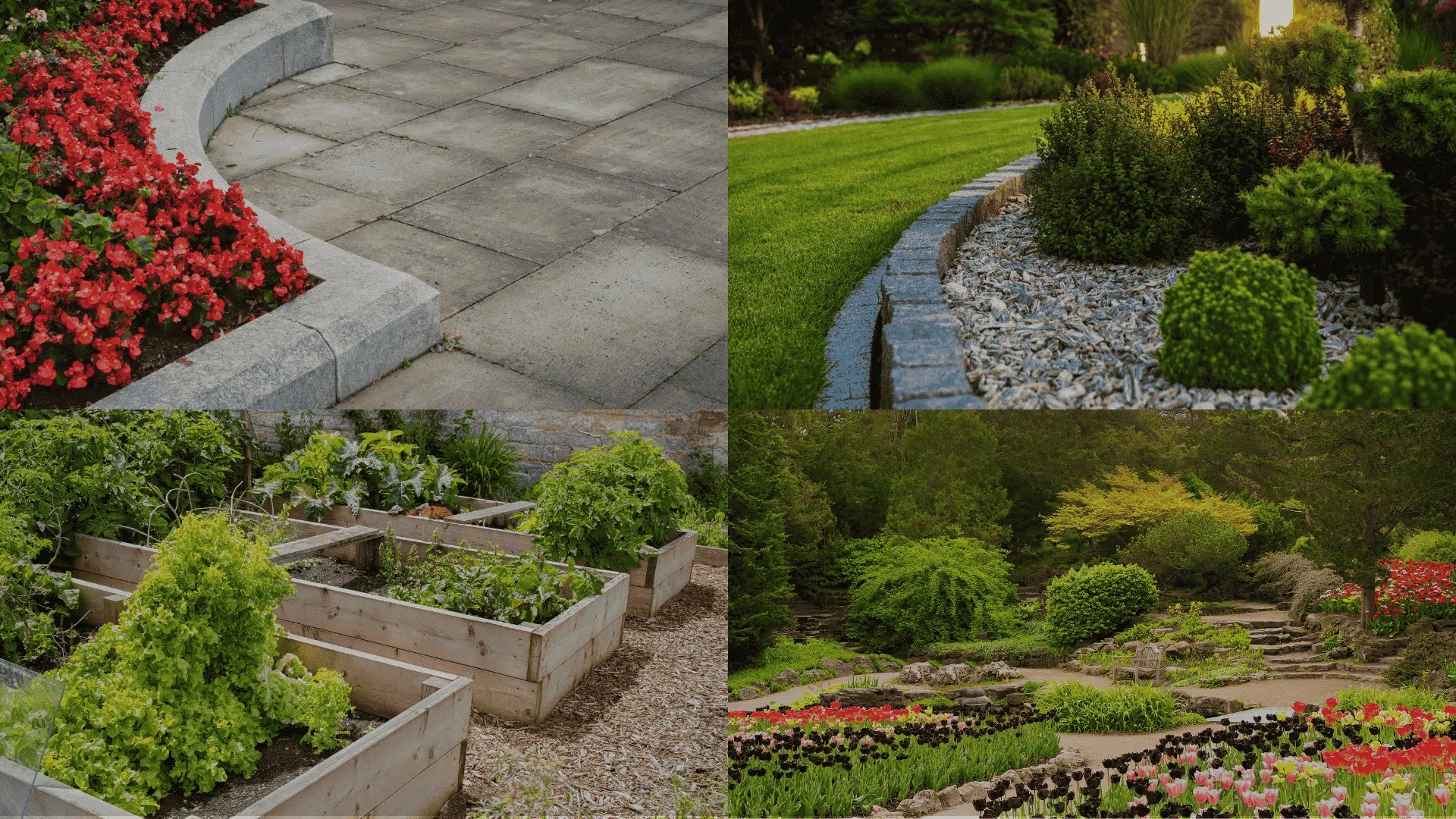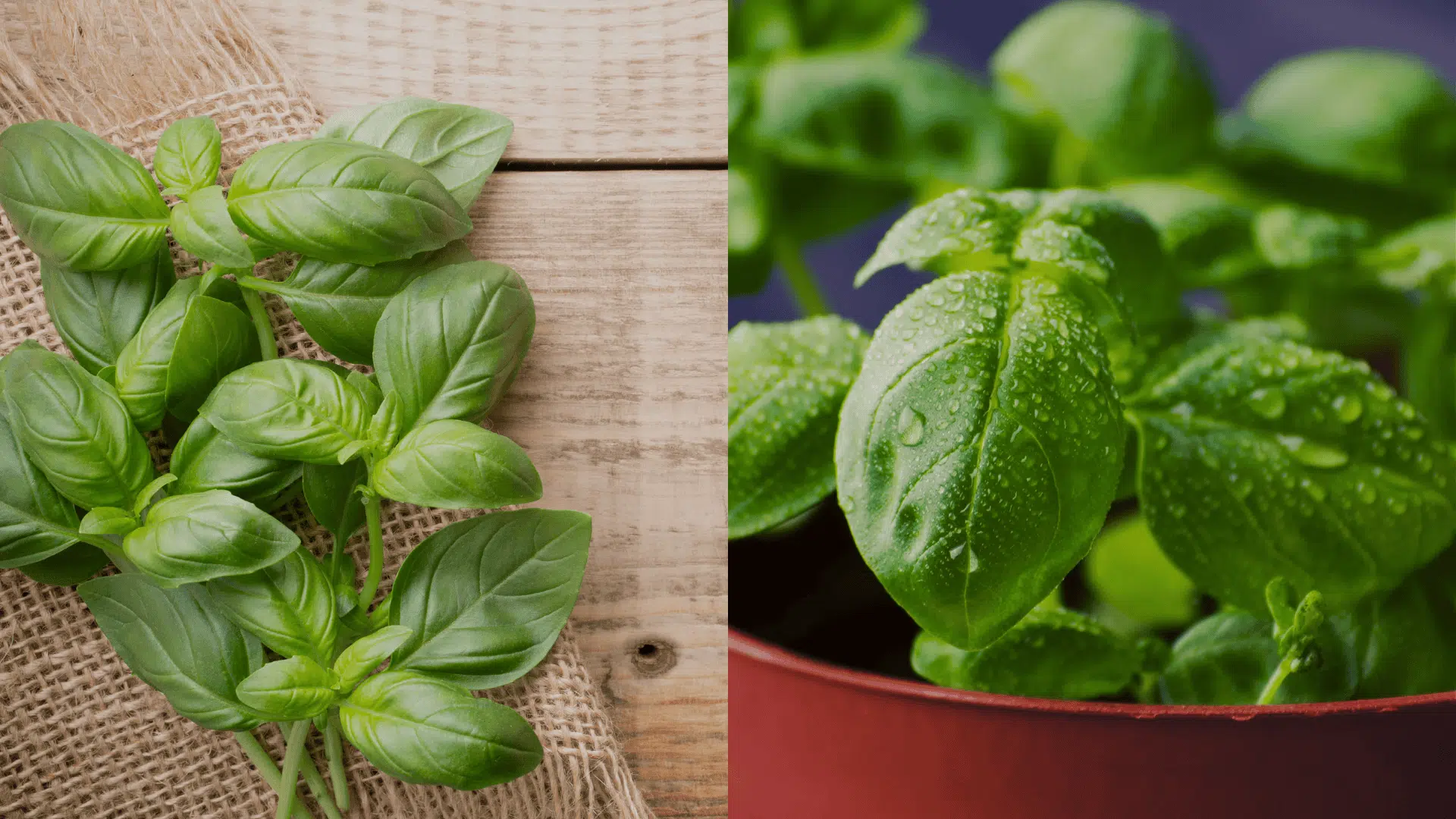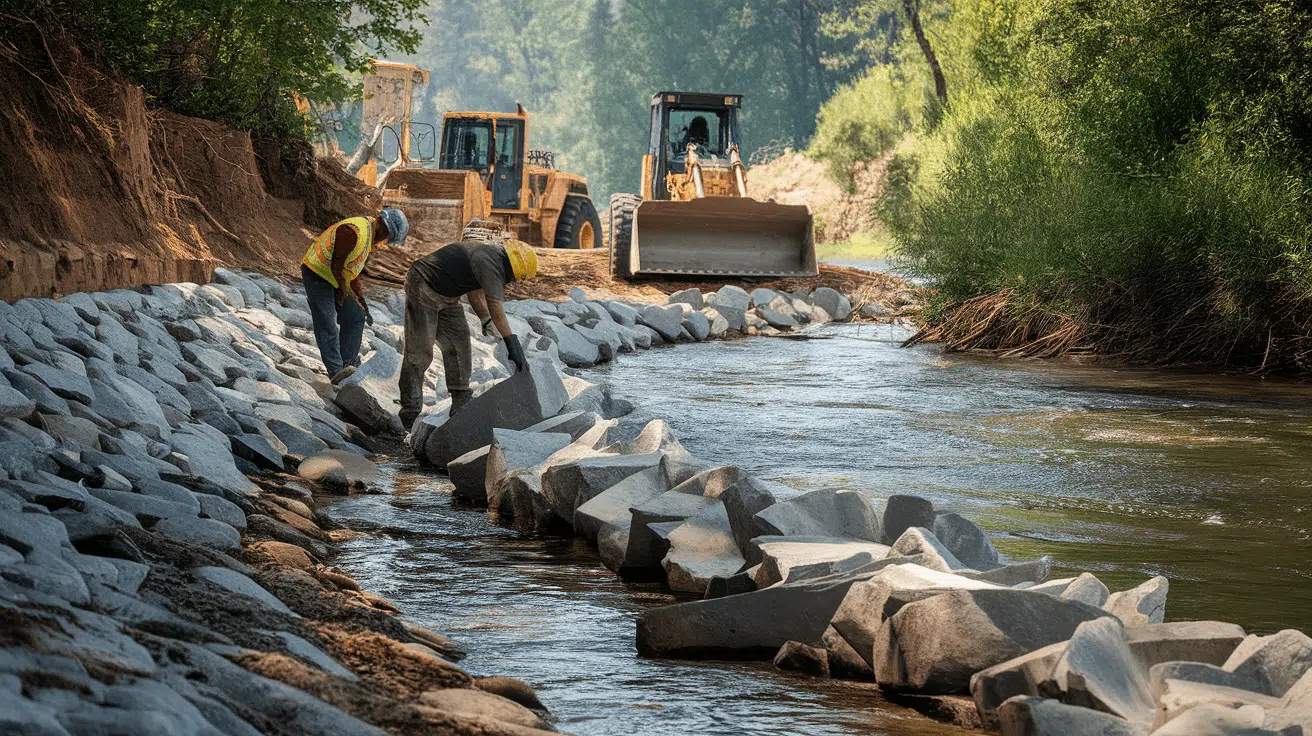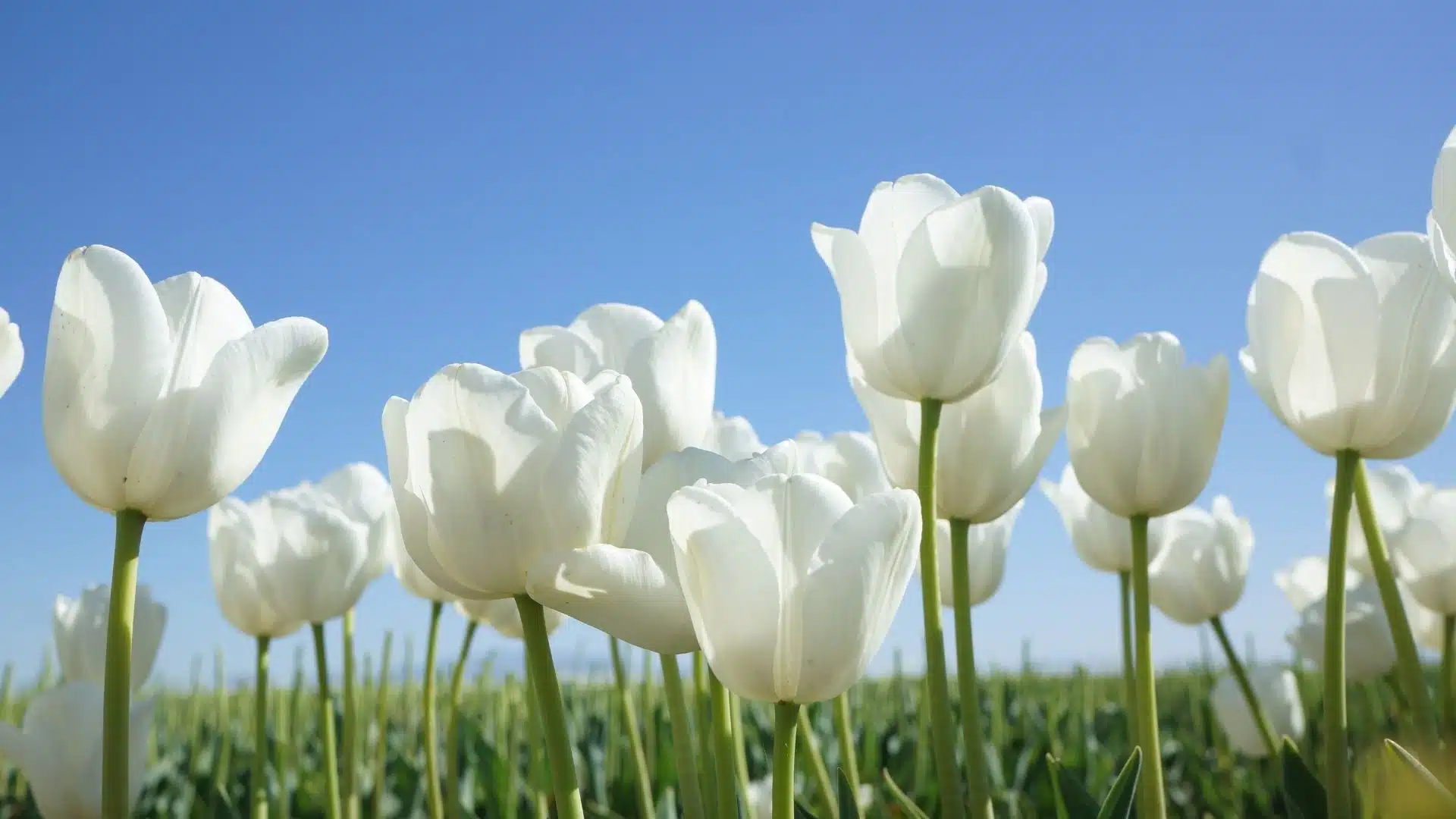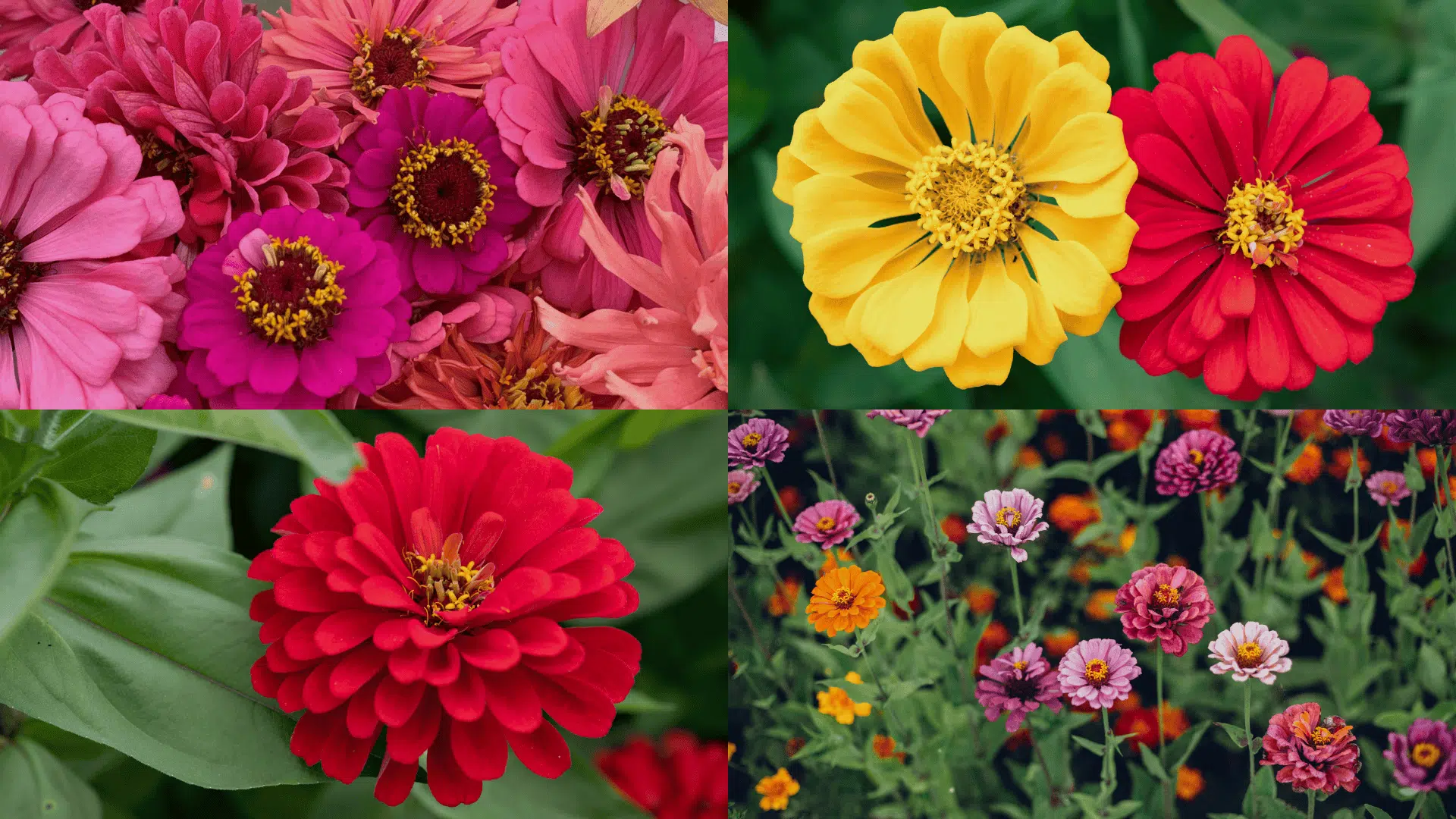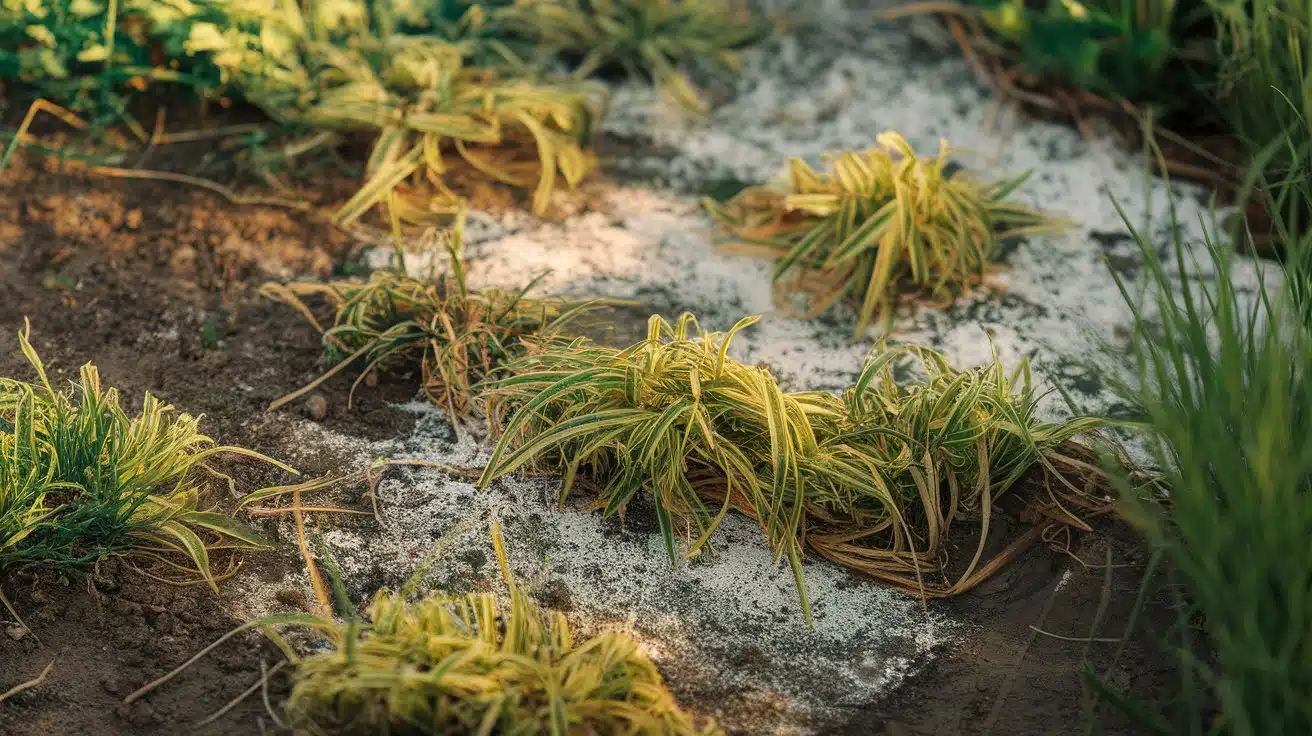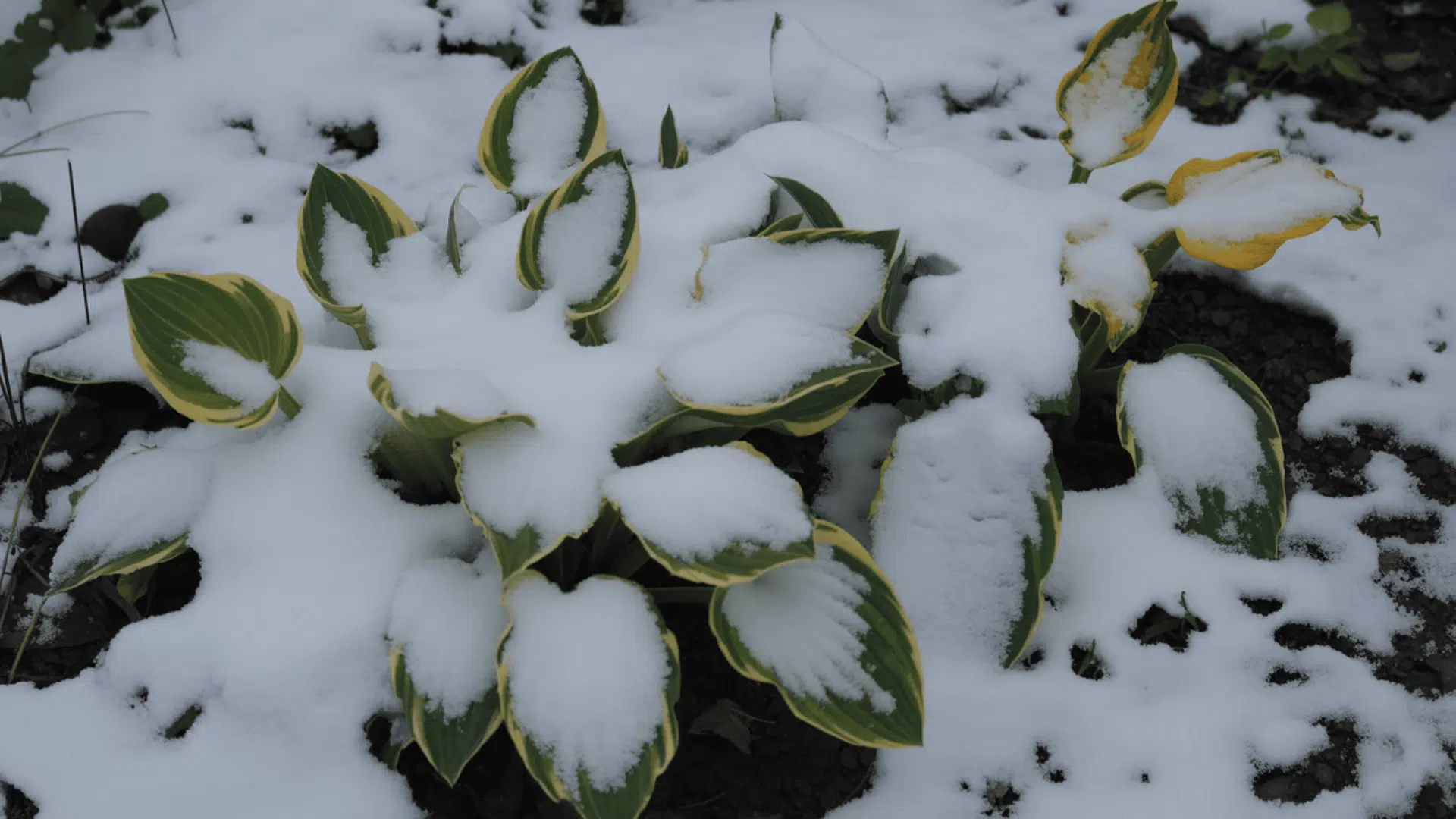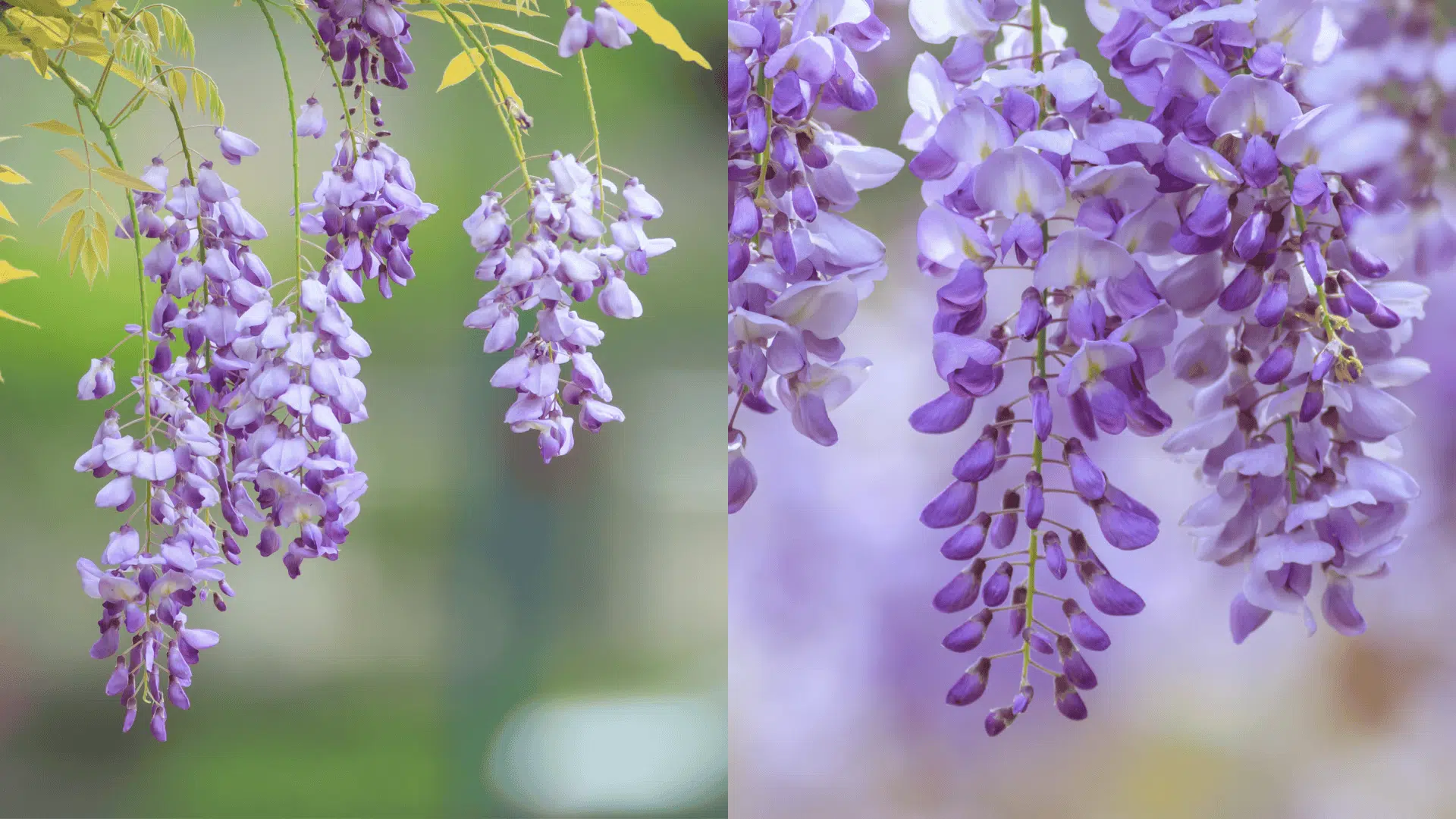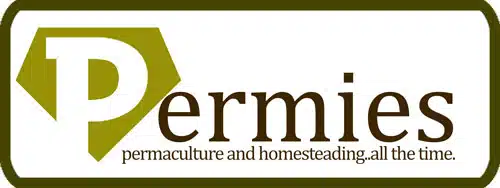Flower beds can dramatically change how a garden looks and functions, and the choice between rocks and mulch plays a big role in both beauty and maintenance.
Many gardeners now consider flower beds with rocks instead of mulch for a cleaner, more permanent look that requires less frequent replacement.
Rocks can keep the garden looking neat, reduce pests, and last for years without breaking down.
However, while rocks are long-lasting, they also affect soil temperature, moisture, and plant health differently than mulch.
In this article, you’ll learn about the benefits, drawbacks, and best uses of flower beds with rocks instead of mulch, along with expert tips for maintaining a balanced, low-maintenance landscape.
What Are Rock Flower Beds?
Flower beds are organized garden sections where flowers or ornamental plants are grown for decorative or functional purposes.
They help define garden spaces, improve curb appeal, and create visual harmony in landscapes.
Rock flower beds use decorative stones such as pea gravel, river rock, lava rock, or crushed stone instead of organic mulch.
These materials cover the soil surface, helping reduce weed growth and prevent erosion while adding texture and contrast to your garden design.
Popular rock options include:
- Pea Gravel: small, rounded stones ideal for borders and pathways.
- River Rocks: larger, smooth stones that offer a natural and polished finish.
- Lava Rocks: lightweight, porous stones that improve drainage.
- Crushed Stone: sharp-edged, cost-effective stones for large flower beds.
Using flower beds with rocks instead of mulch gives a structured appearance and helps prevent frequent material replacement.
Types of Rock Flower Beds
Rock flower beds combine natural beauty with long-lasting function, offering a structured, low-maintenance alternative to traditional mulch gardens.
They help reduce weeds, prevent erosion, and add striking visual texture to landscapes.
Depending on the design, type of stone, and layout, flower beds with rocks instead of mulch can be customized to suit both modern and natural garden styles.
1. Raised Rock Flower Beds
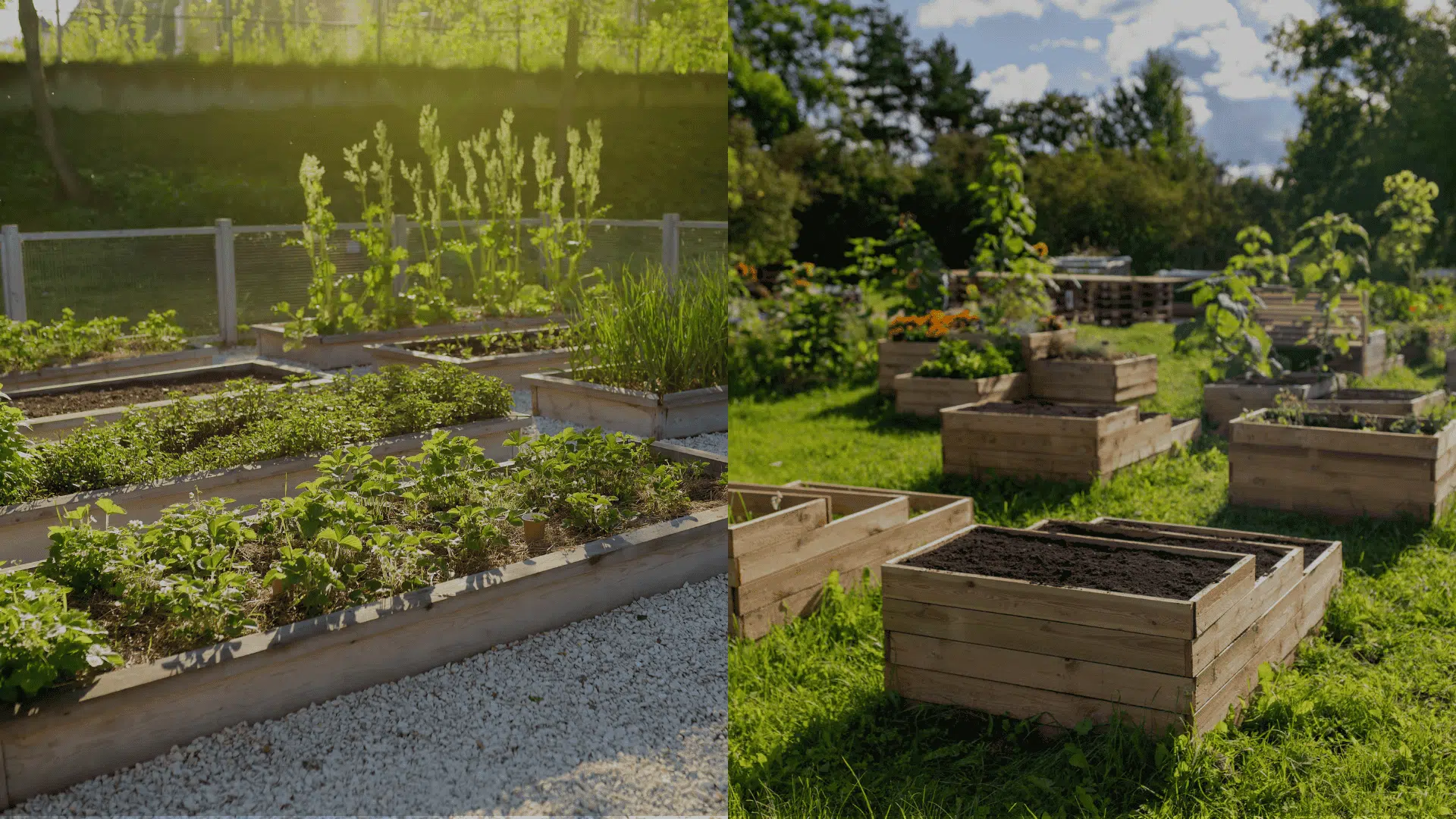
These beds are built above ground using stone walls or borders filled with decorative rocks.
They improve drainage and highlight plant groupings beautifully.
Raised rock beds enhance elevation, provide clear structure, and prevent soil erosion during heavy rain.
2. Border Rock Flower Beds
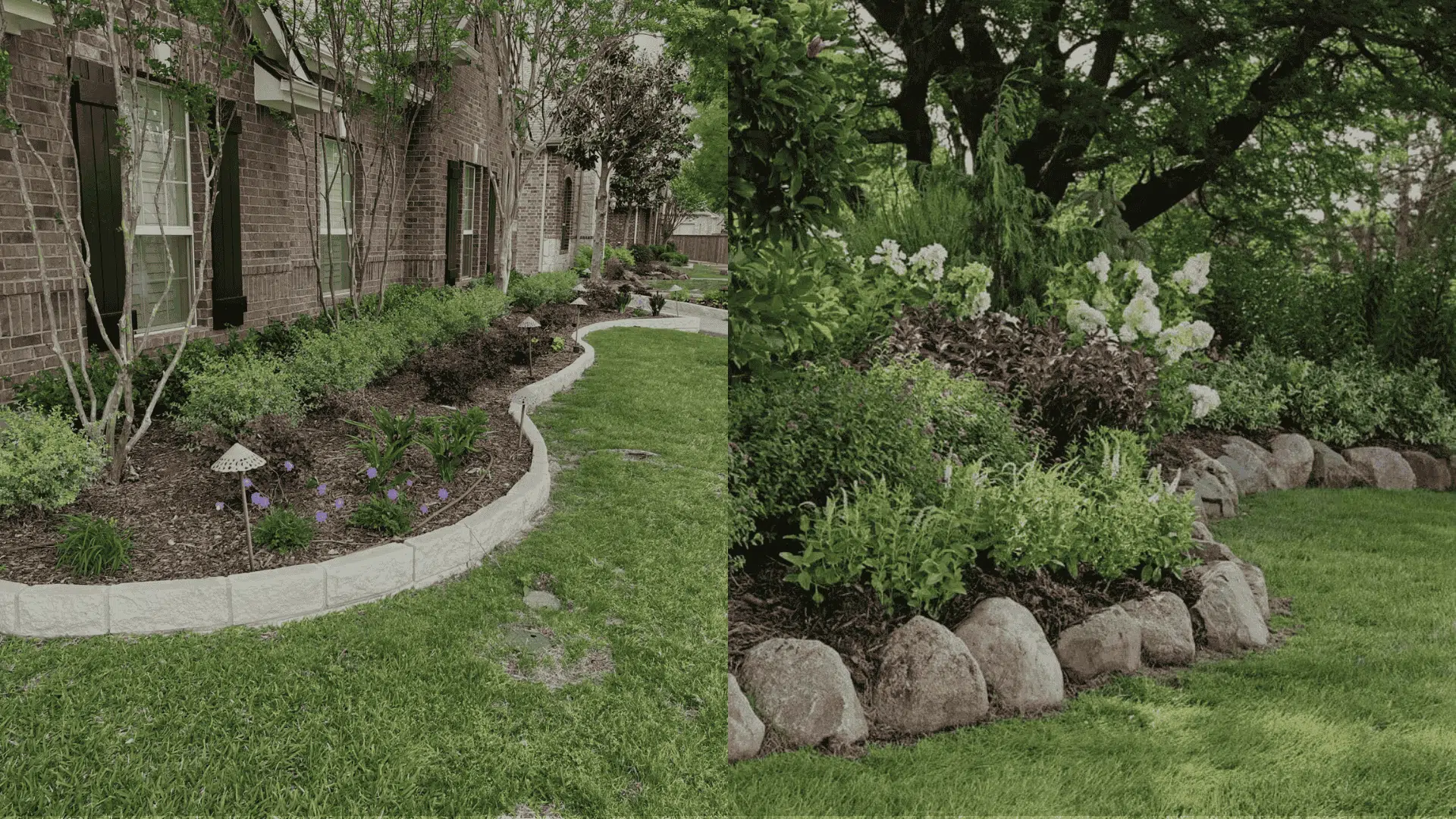
Designed along fences, walkways, or driveways, these beds define edges and create clean transitions between garden sections.
Border rock beds control soil spread, keep pathways neat, and give the garden a polished, organized look.
3. Island Rock Flower Beds
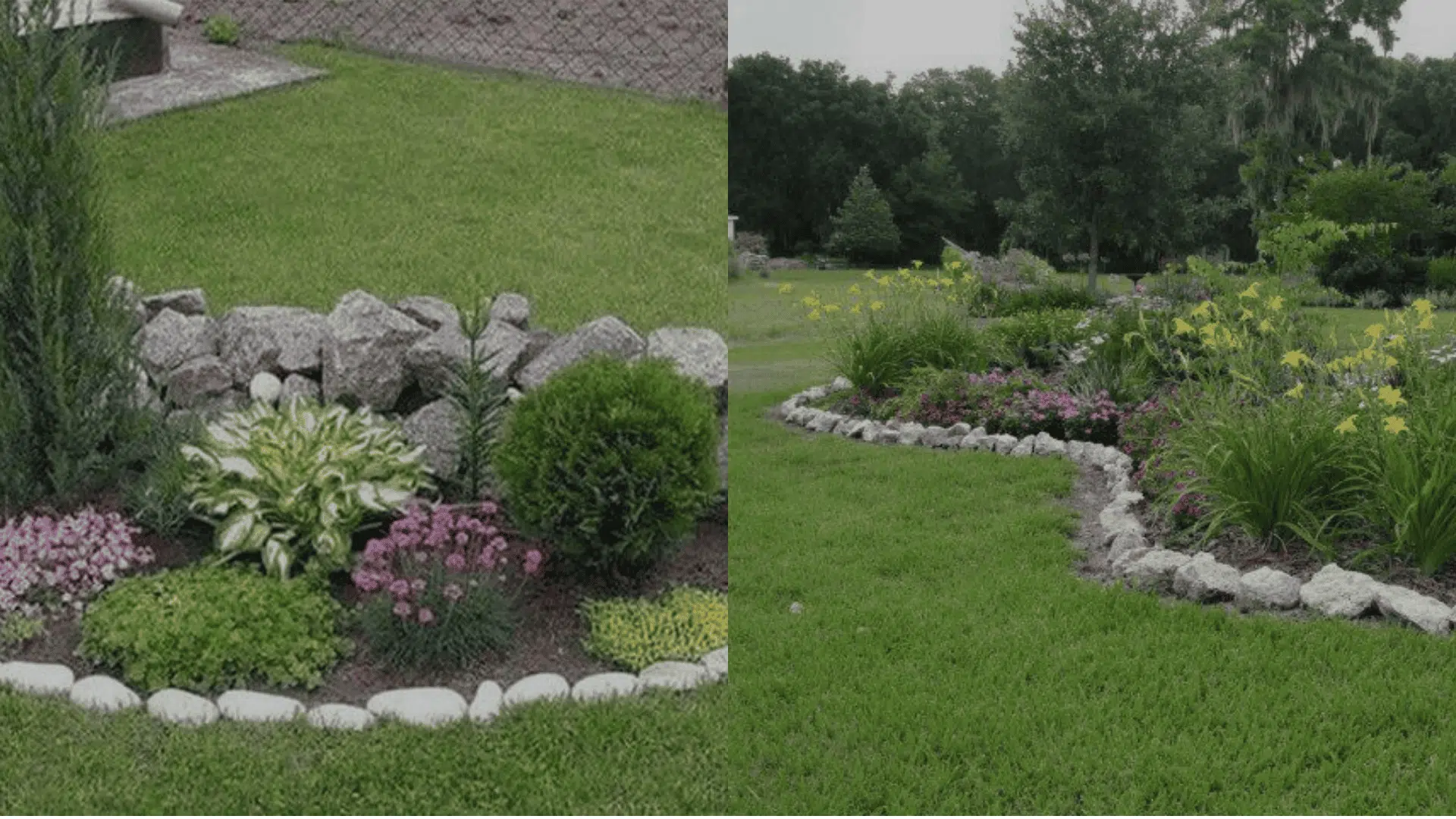
Positioned at the center of lawns or open spaces, island beds use rocks as decorative framing around plants for a 360-degree focal point.
Island designs draw attention and allow creative plant combinations with stones of varied sizes and colors.
4. Sloped or Terraced Rock Flower Beds
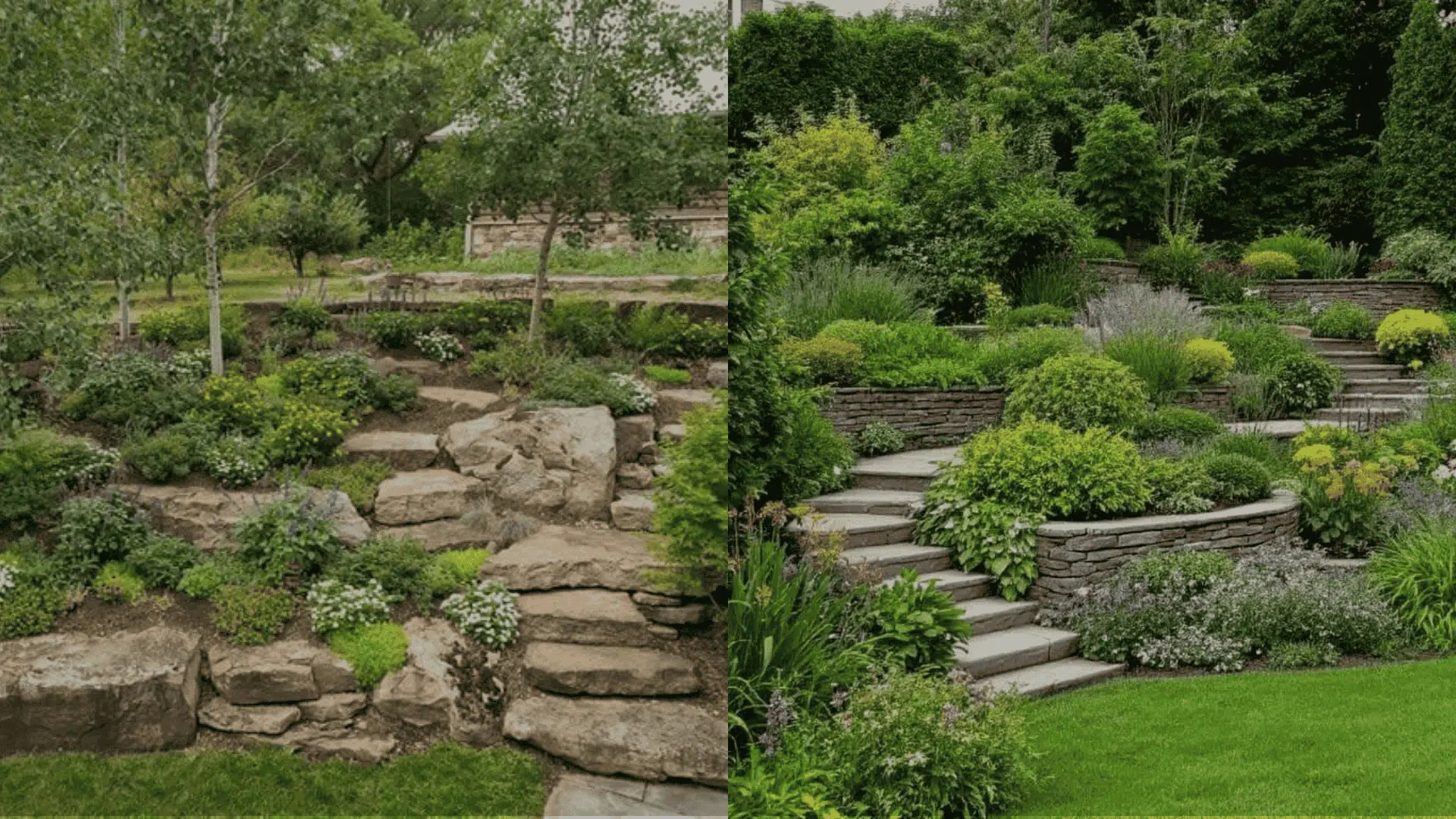
Ideal for uneven terrain, these beds use rocks to form terraces or layered steps that stabilize the soil and prevent runoff.
Terraced rock beds manage water flow, support hillside planting, and add visual depth to sloping landscapes.
5. Decorative Gravel Flower Beds
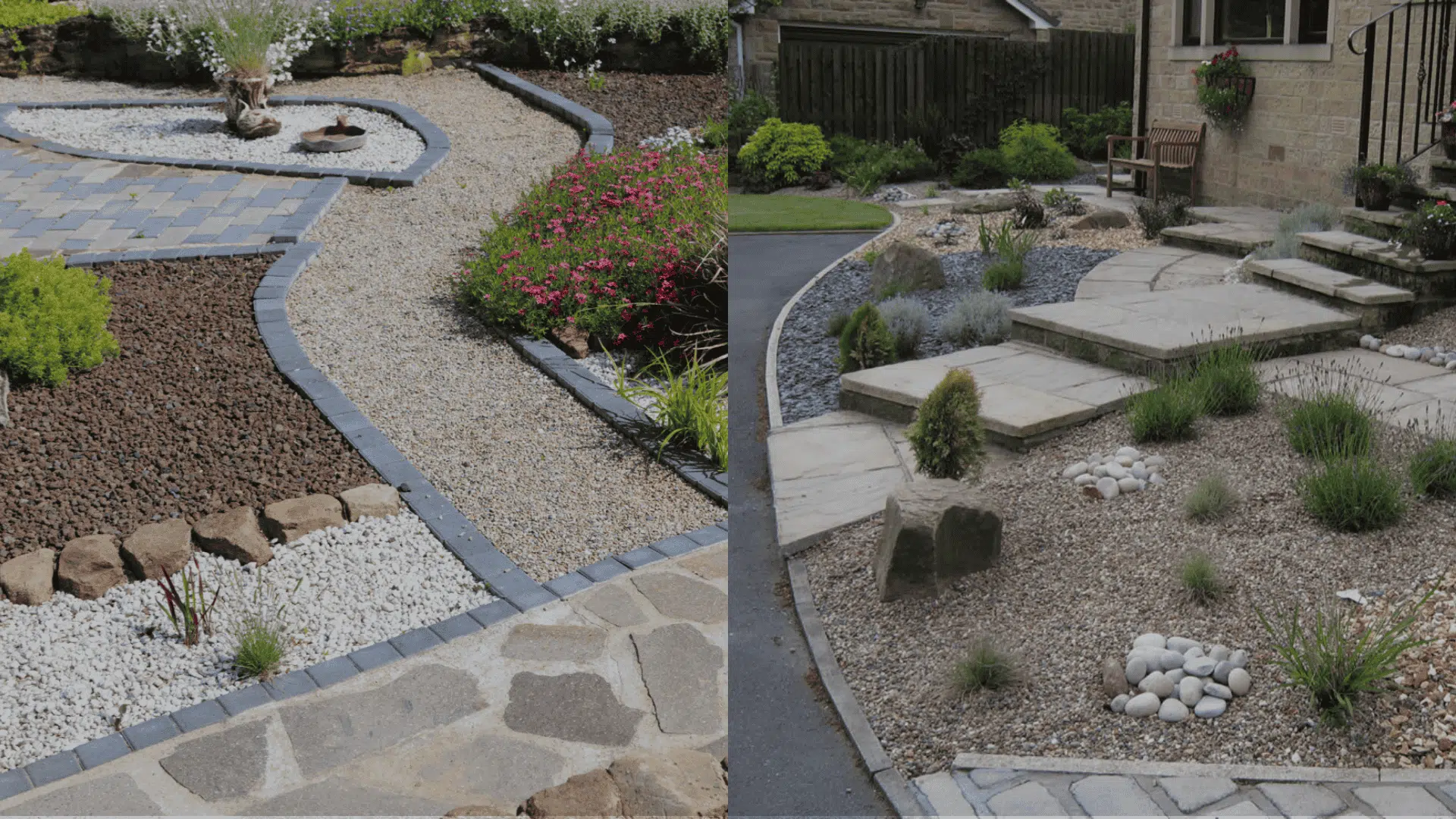
These beds use small rocks or gravel to cover soil around plants for a refined and minimalist appearance.
Gravel allows excellent drainage, reduces weed growth, and gives a clean, modern touch to flower arrangements.
Rock flower beds combine style and practicality in one design.
Raised, sloped, or border layouts all enhance structure and reduce maintenance needs.
Using flower beds with rocks instead of mulch helps create landscapes that stay neat, durable, and visually balanced through every season.
Rocks vs. Mulch: Key Differences
Understanding the differences between rocks and mulch helps you choose what suits your garden best.
This table compares their visual, functional, and environmental aspects for long-term use in flower beds with rocks instead of mulch.
| Feature | Rocks | Mulch |
|---|---|---|
| Appearance & Longevity |
Provide a clean, polished look that lasts for years without fading or decomposing. Excellent for structured or modern landscapes. |
Offer a natural, earthy look that complements most garden styles but breaks down over time and needs replenishment every 1–2 years. |
| Moisture Retention & Temperature |
It can trap heat, making soil warmer and drier, better for drought-tolerant plants. May require more frequent watering. |
Retains moisture well and keeps roots cooler, protecting plants during hot weather and promoting healthier soil hydration. |
| Soil & Nutrients | Do not add organic matter or nutrients, but improve drainage and reduce compaction in heavy clay soils. | Enrich the soil as they decompose, adding nutrients that improve structure, fertility, and microbial activity. |
| Maintenance & Durability | Require minimal upkeep once installed; resistant to pests, weather, and erosion. | Need regular replacement and occasional turning to prevent mold, pests, or matting. |
| Cost & Installation | Higher upfront cost but long-lasting investment with minimal future expenses. | Lower initial cost but requires ongoing replacement, making it more expensive over time. |
| Best Use Case | Ideal for dry climates, perennial gardens, and decorative landscapes. | Best for vegetable gardens, annual flowers, and moisture-dependent plants. |
Both materials have distinct strengths; rocks provide durability and structure, while mulch supports soil health and moisture.
Choosing between them depends on your garden’s design, climate, and long-term maintenance goals.
Pros and Cons of Using Rocks in Flower Beds
Using flower beds with rocks instead of mulch offers several long-term advantages but also comes with certain limitations depending on the garden type and climate.
Benefits:
- Low Maintenance: Rocks do not decompose, meaning fewer replacements and less upkeep.
- Long-Lasting Durability: They withstand weather conditions for years without fading or breaking down.
- Erosion Control: Excellent for sloped areas and regions with heavy rain.
- Pest Resistance: Rocks discourage pests such as termites and ants that thrive in organic matter.
- Clean Appearance: Provide a neat, polished look that lasts through every season.
Drawbacks:
- Heat Retention: Rocks can trap heat, raising soil temperature and stressing delicate plants.
- No Nutrient Value: Unlike mulch, rocks don’t enrich soil as they don’t decompose.
- Heavy and Hard to Move: Rearranging or replacing rocks takes effort and time.
- Weed Growth: Weeds can still emerge if no barrier is installed underneath.
- Higher Initial Cost: Installation costs more upfront, though maintenance remains low long term.
Rocks bring long-lasting structure and minimal maintenance to your flower beds, but they may not support soil health or moisture as effectively as mulch.
The ideal choice depends on your garden’s needs, plant types, and climate conditions.
When to Use Rocks vs. Mulch
Choosing the right material depends on plant type, climate, and long-term care goals.
This comparison helps you decide whether flower beds with rocks instead of mulch are the right fit for your garden.
| Category | When Rocks Work Best | When Mulch Works Better |
|---|---|---|
| Best For | Perennial plants, shrubs, and succulents | Annuals and moisture-loving flowers |
| Climate | Hot, dry, or drought-prone regions | Cool or moderate climates |
| Maintenance | Low-maintenance, long-term landscapes | Requires seasonal refresh and replacement |
| Soil Impact | Improves drainage but doesn’t add nutrients | Enriches soil with organic matter |
| Functionality | Prevents erosion and offers durability | Supports soil moisture and temperature balance |
Tip: Many gardeners combine both materials, using rocks for decorative areas and mulch near delicate flowers for better growth balance.
Tips for Flower Beds With Rocks Instead of Mulch
Well-planned flower beds with rocks instead of mulch enhance garden structure and make upkeep easier.
Proper preparation ensures both function and aesthetics.
Following these steps keeps your flower beds with rocks instead of mulch attractive and functional for years.
Before Installation
- Clear weeds and debris thoroughly.
- Lay down a weed barrier or landscape fabric to reduce regrowth.
- Use edging materials to contain the rocks neatly.
Maintenance Tips
- Remove fallen leaves and organic matter regularly.
- Refresh the rock layer every few years for even coverage.
- Inspect for compacted soil beneath and loosen it occasionally.
Conclusion
Choosing between rocks and mulch depends on your garden’s long-term vision.
Flower beds with rocks instead of mulch offer durability, structure, and low maintenance, ideal for modern or drought-resistant landscapes.
However, they lack the organic benefits that mulch provides for improving soil quality and moisture retention.
Rocks are perfect for permanent landscapes with hardy plants, while mulch supports fast-growing flowers and nutrient-rich soil.
The best approach is to match the material with your climate, garden design, and upkeep goals.
Which ground cover do you prefer in your garden, rocks or mulch?
Share your experiences and favorite combinations in the comments below!
Frequently Asked Questions
Can I Mix Rocks and Mulch in the Same Flower Bed?
Yes, combining both materials works well. Use mulch around plants needing moisture and rocks in decorative or dry areas for contrast.
Do Rocks Affect Soil Drainage?
Rocks improve drainage by preventing water from pooling on the surface, but too many can dry the soil quickly if used without a barrier.
How Often Should I Clean or Replace Rocks in My Flower Bed?
Rocks don’t need frequent replacement. Light cleaning once or twice a year and occasional leveling keep them looking new and functional.

